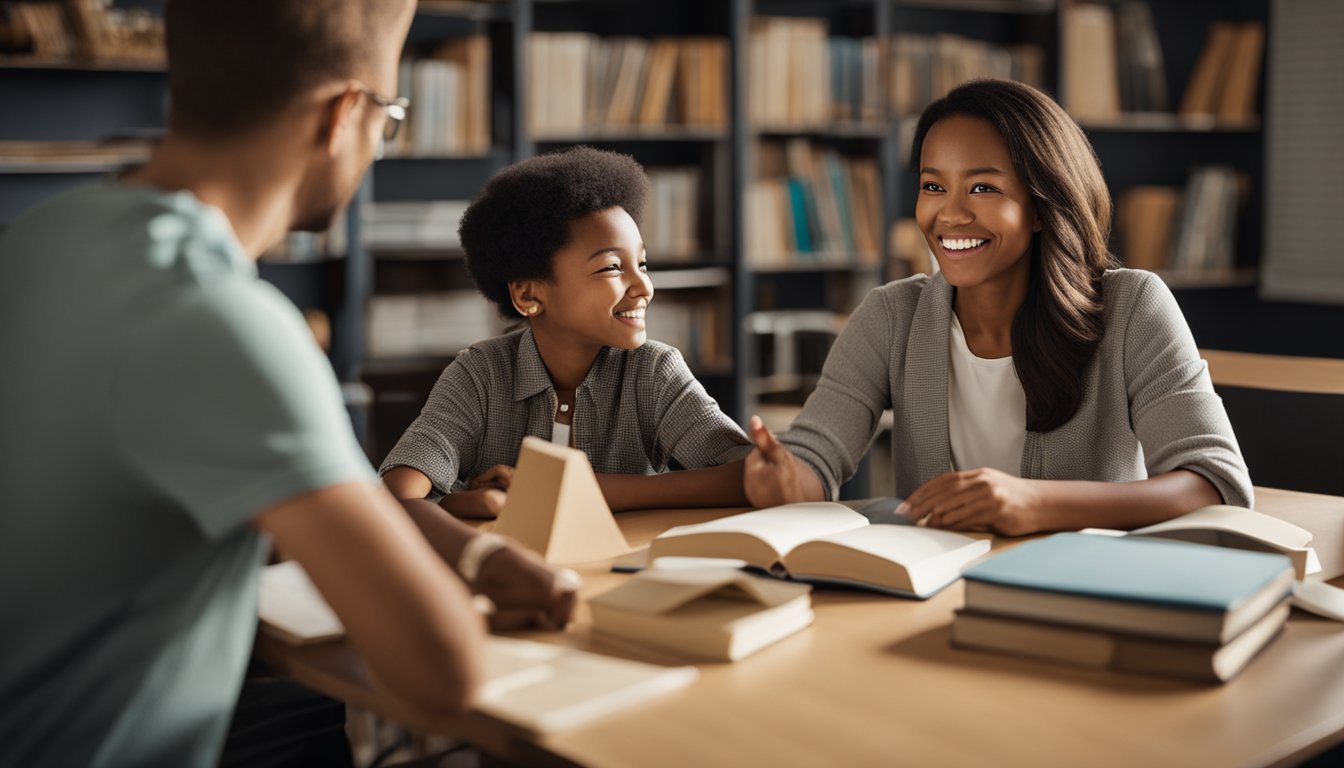Late updated: 31 Oct 2024 11:10
Written by:
Tips For Effective Parent-Teacher Collaboration: Fostering Successful Communication
Effective parent-teacher collaboration is key to enhancing a student's educational journey. As educators and parents, we understand the importance of fostering strong partnerships to support children's academic and personal growth. By maintaining open lines of communication and building positive relationships, we create a supportive environment where students can thrive.

We all know that communication is the foundation of successful collaboration. Establishing consistent, two-way communication channels helps us share insights and address concerns proactively. Creating a partnership based on trust and mutual respect enables us to work together effectively for the benefit of the students.
Both teachers and parents contribute positively to a child's learning experience by acknowledging and valuing each other's roles. This not only empowers students but also fosters accountability and engagement in their education. Let's explore some practical strategies to strengthen these collaborative efforts.
Key Takeaways
- Maintain consistent communication for effective collaboration.
- Build trust through positive relationships.
- Empower students by valuing the roles of both parents and teachers.
Strategies for Effective Parent-Teacher Communication
Effective parent-teacher communication requires established methods for clear interactions. We focus on eliminating barriers and optimising various channels to support ongoing dialogue. By integrating proactive strategies, we foster strong partnerships that prioritise the child's educational needs.
Establishing Clear Lines of Communication
Setting clear expectations from the outset is crucial for successful interactions. We must define our goals for what parent-teacher communication should achieve, ensuring mutual respect. Establishing clear communication channels allows us to share and receive important information promptly. This can involve regular updates through newsletters, emails, or even scheduled meetings. Clear expectations help to prevent misunderstandings, while regular communication keeps both parties informed and aligned with the child’s development. We should strive to listen actively and encourage two-way dialogue, which helps build trust and transparency.
Overcoming Communication Barriers
Communication barriers, such as language differences, can hinder effective interaction. To address this, we may utilise translation services to ensure messages are conveyed accurately. Recognising and respecting cultural differences is crucial, as it encourages empathy and understanding. A positive attitude towards overcoming these challenges can make all the difference. Moreover, being open to flexible communication methods, such as using simple language or visual aids, facilitates better understanding. Tailoring our approach to meet diverse needs shows our commitment to inclusive communication.
Utilising Diverse Communication Channels
Leveraging various channels enhances our ability to connect effectively. Parent portals provide a platform for quick access to student information and communication tools. Phone calls or home visits offer a personal touch, while video conferencing provides flexibility for those with time constraints. These methods cater to different preferences, making it easier to engage with parents. School calendars and online resources also play a role in keeping everyone informed of schedules and events. Diverse channels ensure that vital information reaches its intended audience efficiently. By embracing these communication strategies, we promote active participation in the educational process.
Cultivating a Supportive Learning Environment

Creating a supportive learning environment necessitates active collaboration between parents and teachers. This partnership fosters student engagement and ensures student learning outcomes are well-coordinated. Key practices to nurture this environment include fostering parental involvement, celebrating student success, and reinforcing home-school partnerships.
Fostering Parental Involvement in Education
Engaging parents in the educational process is vital. We can start by organising parent-teacher conferences and open houses. These events offer parents insights into their child's progress and provide a platform for discussing academic achievement and growth.
Additionally, leveraging digital tools like emails and school apps keeps parents updated. Regular communications help establish a supportive network, enabling parents to track specific learning goals and address challenges promptly. Encouraging parents to participate in classroom activities can also personalise their involvement, promoting stronger bonds and sharing common goals.
Celebrating Student Success and Addressing Challenges
Acknowledging achievements bolsters student confidence and motivation. Celebrations should be both classroom-based and school-wide, recognising not just academic success but also any improvements or extracurricular accomplishments.
For instance, initiating a "Student of the Month" programme can highlight individual successes, while assemblies can publicly commend achievements. However, acknowledging challenges is equally important. We must adopt an empathetic approach, providing constructive feedback and support. This balanced recognition encourages a positive learning atmosphere and enhances student engagement.
Reinforcing Home-School Partnerships
Strong partnerships between home and school are foundational for student success. Regular, transparent communication is key, ensuring both parties work towards mutual objectives for the student's well-being and holistic development.
Establishing a feedback loop allows parents and teachers to synchronise on student progress. Regular meetings and workshops can provide a deeper understanding of curriculum changes and classroom expectations. Encouraging a two-way dialogue, where both teachers and parents actively contribute ideas, can further solidify these partnerships. Support from both sides ensures that students are fortified against any challenges they face, ultimately leading to better learning outcomes.
Frequently Asked Questions

Effective parent-teacher collaboration is fundamental for fostering an enriching educational environment. This section addresses common questions about building strong relationships and ensuring successful communication and collaboration.
How can teachers build strong relationships with parents?
Establishing trust is key. We can accomplish this by staying connected through regular updates and showing genuine interest in parental insights. Creating a welcoming atmosphere during meetings also encourages open dialogue. When parents feel heard and valued, strong bonds are formed, paving the way for a productive partnership.
What strategies enhance communication between teachers and parents?
Clear and consistent communication is paramount. Utilising multiple channels like emails, newsletters, or digital platforms ensures everyone is informed. We should tailor our communication to meet the needs of both parties, fostering a two-way exchange. This approach helps bridge gaps and align goals between home and school.
Why is collaboration between parents and teachers crucial for student success?
Collaboration creates a unified support system for students, ensuring consistent learning experiences. When we work together, students receive reinforcement of educational goals both at home and in school. This shared commitment between parents and teachers builds a stable foundation, promoting academic and personal growth for the child.
What are the essential elements of productive teacher-parent-family partnerships?
Mutual respect, open communication, and shared objectives form the core of effective partnerships. We should recognise the expertise each party brings to the table. By setting clear expectations and continuously exchanging feedback, everyone involved works towards fostering a supportive and enriching environment for the student.
What are the key practices for conducting a successful parent-teacher conference?
Preparation is vital. Prior to the meeting, reviewing student progress helps focus the conversation. We should aim for a collaborative tone, setting aside time for parents to express concerns and perspectives. Having concrete examples and actionable steps enhances the meeting's effectiveness, ensuring both parties leave with a coherent plan.
In what ways can teachers collaborate effectively with parents to support child development?
Individualised attention to each child's unique needs is imperative. We can develop personalised goals and strategies with parental input, ensuring they align with the child's strengths and challenges. Regularly revisiting these plans and monitoring progress allows us to adapt and provide optimal support as the child evolves.
